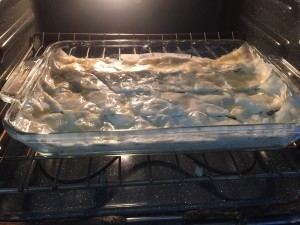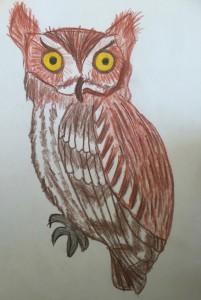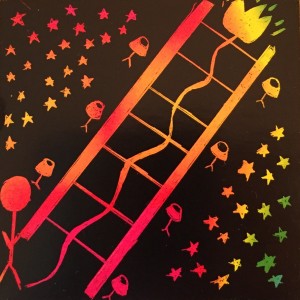Introductory Essay to “Transformative Art”
ø
For a PDF version of my Introductory Essay to Transformative Art, please click on the following: Introductory Essay to Transformative Art.
As a junior at Harvard College, I am joint concentrating in Government and the Comparative Study of Religion with a specific focus on Islam and Politics. I have always been interested in the religious tradition given my own “situatedness” or epistemology: I had grown up during a time in which Islam and politics has been at the forefront of many current events, such as 9/11 or the Arab Spring. Consequently, the focus of my Islamic studies has been on legal dimensions of the religious tradition rather than the tradition’s earlier elements, such as the artistic elements. I had been like one of the individuals that Professor Asani describes in his book, Infidel of Love: in Islamic studies, individuals tend to study the Quran and the legal dimensions of Islam (Asani 21-22). Though I have participated in many artistic extracurricular activities, I have never taken a class that employs the cultural studies approach, which emphasizes using culture, whether it is the arts or literature, when studying a phenomena, until taking Professor Asani’s class. As Diane Moore notes, religion is a phenomenon that is deeply embedded in all dimension and contexts of human experience, whether it be historical, political, economic, artistic, literary, etc. (Asani 9). Therefore, it is critical to study religious tradition through this cultural studies approach. Through the art pieces, and my analyses of them in this portfolio, then, I hope to have creatively and successfully employed the cultural studies approach to reflect on the themes that we have studied in this course and make art as transformative for others as it has been for me throughout my life.
One of the first themes I explored through the cultural studies approach is that of the communities of interpretation. In his piece, Daftery argues that instead of using the terms “heterodox,” “orthodox,” “sects,” or other terms used to describe Islam or Christianity, individuals should use the term “communities of interpretation,” which does not valorize one sect over another (Daftery 163). In the Islamic religious tradition, there are various communities of interpretation, such as the Sunnis and Shias, which further subdivide through their various beliefs including who they think the proper successor of the Prophet Muhammad is and how they think believers should practice the religion (Daftery 163). As Professor Asani notes in his book, the cultural studies approach reinforces the communities of interpretation (Asani 13). Therefore, I employed art to manifest these communities of interpretation. For example, in my week three response, a music composition, I utilize different instruments to provide voices to the different communities of interpretation within the religious tradition. Additionally, in my week six response, a design of a portion of a black and white Mihrab, I present various designs and layers of the Mihrab to reflect yet again on the various communities of interpretation within the religious tradition. As Asani noted in our last lecture, one of the goals of this class is to give voice to those that do not normally get a voice (Lecture 4.28.16). Ultimately, I hope to provide a voice to the communities of interpretation that may not usually get a voice.
Secondly, I tried to explore the interaction between gender and Islam. In week three, we had learned how in certain countries, such as Indonesia, women can recite the Quran publicly (Rasmussen 30). In order to reflect on this idea that women can have a voice within the religious tradition, and further, to give women who may be marginalized the ability to have a voice, I used two pianos in the aforementioned week three music composition to represent a male and female voice in the piece. Therefore, through the cultural studies approach, I hoped to showcase the ability of women to have a voice in the religious tradition.
Thirdly, I explored the theme of “self” through my artistic responses. One of the beliefs within the religious tradition that we had discussed was fana, or “Die before you die.” Fana is annihilation, or getting rid of one’s egotism so that one can become spiritually closer to God (Lecture 3.24.16). To represent this fana, I used colored pencils and a photograph to symbolize the birds in Attar’s Conference of the Birds who Hoopoe guides to overcome their selfish desires, whether it is a desire for control, material wealth, or immortality, in order to reach spiritual awareness (Attar 46-48). Therefore, through utilizing the cultural studies approach, I hoped to not only reflect on the various types of identity, whether it was a group identity as a community of interpretation, or a personal identity as the “self,” within the religious tradition.
The fourth theme I explored further through the cultural studies approach was the unity that art as a whole provides for the different communities of interpretation. As Nasr states in his piece, “Islamic art is the result of the manifestation of Unity upon the plane of multiplicity” (Nasr 7). In my artistic pieces, then, I tried to show the unity that the different communities of interpretation have through the larger beliefs they may share and the art that they produce. For example, in my week four artistic response to the stories of the Mi’rāj, I used the colors of the rainbow to represent the communities of interpretation and the way in which they may interpret the Mi’rāj. In class, we had even viewed different manifestations of the Mi’rāj by different communities of interpretation, which I tried to reflect in my piece (Lecture 3.1.16). Thus, though the communities of interpretations differed in their interpretations and presentations of the Mi’rāj, they were similar in their belief in the story of the Mi’rāj and the Prophet’s ascendance to meet with God (Asani 128). Therefore, I hoped to show that the various communities of interpretation, though they may be different in certain beliefs, are similar in other beliefs, their devotion to their larger religious tradition, and the art forms that they may use to feel a connection with the sacred, whether it is music, designing a Mihrab, or some other art form.
Subsequently, I hoped to show how art is not only a tool for studying and unifying the religious tradition, but also can serve as a tool for peace. If art can represent the diverse communities of interpretation, then art, I would argue, can accordingly be a medium for peace. For example, if the various instruments within the week three and week 12 music compositions can play together in harmony, then I truly believe that these communities of interpretation can similarly work together to mitigate the tensions that they may hold in society. If Sufi rock, which in itself, per Salman Ahmad, combines musical traditions that strive to foster notions of peace in society, then my rendition of the Sufi rock strives to do the same as well, and so does it more generally to those who compose or listen to these pieces as well (Lecture 4.21.16). Further, the fact that these various art forms are something that these different communities of interpretation share suggests that through art they may be better able to sympathize with each other, and thereby mitigate any tensions among them as well. For example, if Muslim women and men in the world all sympathize in the way that they create a certain form of art, such as Baklava, which, I argue in my week 11 response is a form of art, then this suggests that art is something that they can relate to each other with, and thereby mitigate tensions. Therefore art can serve as a tool to foment sympathy, empathy, and peace not only among those within the religious tradition, but also among those that do not practice the particular religious tradition but who practice those art forms as well.
Consequently, as these themes overlap throughout all six of my blog posts, I organize my blog posts by the week to which I am responding. For week three, I respond to “God’s Word as Sacred Sound and the Concept of Prophethood” with a music composition in which I address the themes of the communities of interpretation, gender in Islam, and religion as a tool for peace. For week four, I respond to “Prophet Muhammad as Paradigm, the Mi’rāj, and Poetry in Praise of the Prophet” with a “Scratch Magic Note” in which I address the themes of the communities of interpretation and the unity that art provides for the religious tradition. For week six, I respond to “The Art, Architecture, Symbolism and Décor of Mosques” with a black and white design of a Mihrab in which I address the communities of interpretation and the unity that art provides for the religious tradition. For week 10, I respond to “Reform, Revival, and Muslim Women Defining Identity” with a colored pencil drawings of two birds and a photograph of my own bird in which I address the notion of “self.” For week 11, I respond to “ Sir Muhammad Iqbal and the Creation of Pakistan; the Iranian Revolution” with photographs of baklava that I had specifically baked in response to this week, in which I address the communities of interpretation, the unity that art provides for the religious tradition, gender in Islam, and religion as a tool for peace. For week 12, I respond to “Literature and Arts as Critique and Resistance; Sufi Rock” with another music composition, though this time a rock music piece, in which I address communities of interpretation and religion as a tool for peace. Therefore, through employing the cultural studies approach in studying the Islamic tradition, I hope that the spectators of my art with also engage with the religious tradition through the cultural studies approach and the themes that I try to depict.
Ultimately, through this blog, I hope to address what Professor Asani noted were some of the key goals of this class: firstly, giving voice to those that do not normally get a voice within the religious tradition (Lecture 4.28.16). I try to provide these individuals with a voice through representing them and the diverse communities of interpretation to which they belong through my art pieces. Secondly, I try to humanize a tradition that often gets dehumanized in politics and popular culture today (Lecture 4.28.16). Given my own epistemology, I am admittedly aware of how many times popular culture criticizes the religious tradition for the actions of individuals within the religious tradition. Consequently, individuals who view the religious tradition often overlook, or are not as aware, of the many beautiful aspects of the religious tradition, such as the art that has been a part of the tradition since its inception. Through my art, I hope to bring to light some of the beauty that lies within the religious tradition.
In conclusion, there is much more to the religious tradition than meets the eye in media, and I hope that my blog, Transformative Art, will make individuals more aware about it. Further, I hope that my spectators will consider taking the cultural studies approach into account when evaluating any phenomena in the future. The process of creating this art has undoubtedly been transformative for me, given my reflection, and I truly believe it can do the same for the viewer. Therefore, I truly believe that art, in whatever shape or form, is transformative, and often cathartic, for both the artist and the spectator.
Thank you, Professor Asani, Ceyhun, and John for making this class not only transformative for me in terms of cultural literacy, but also for the rest of the class and those who read our blogs!







